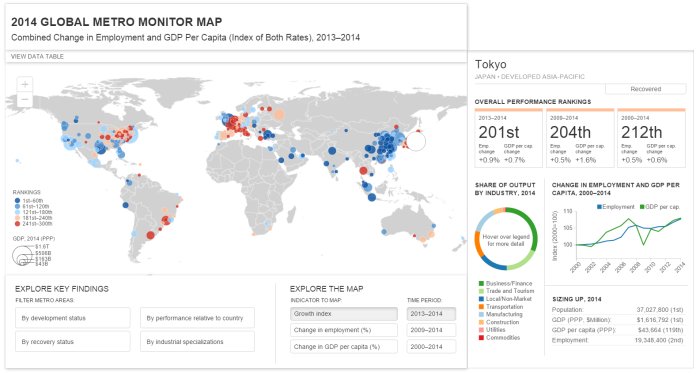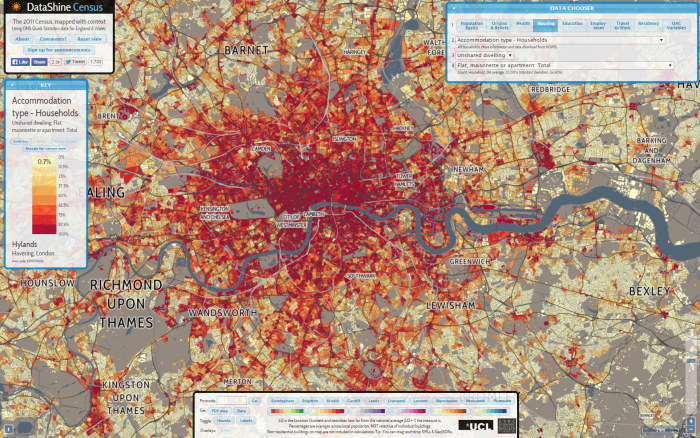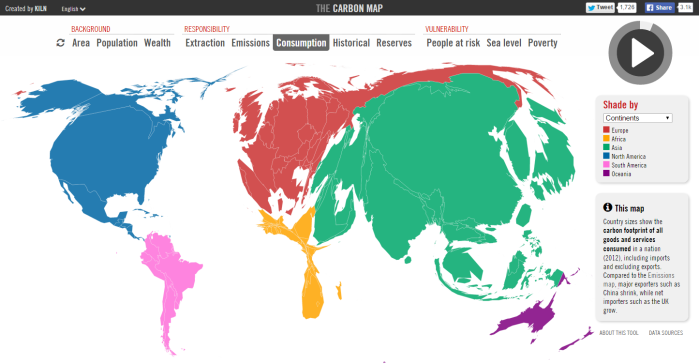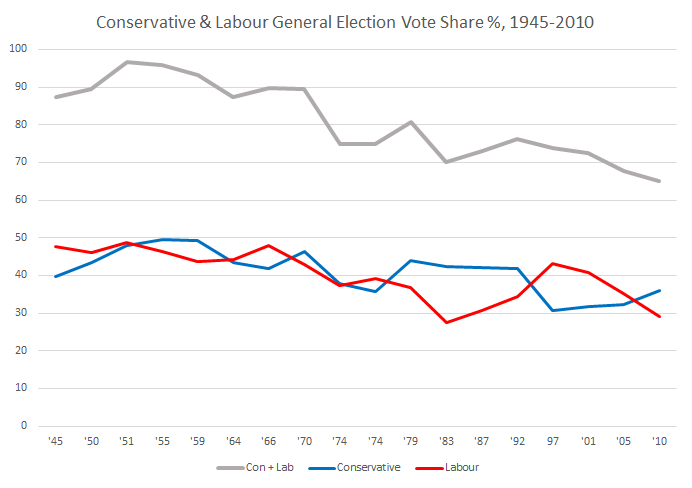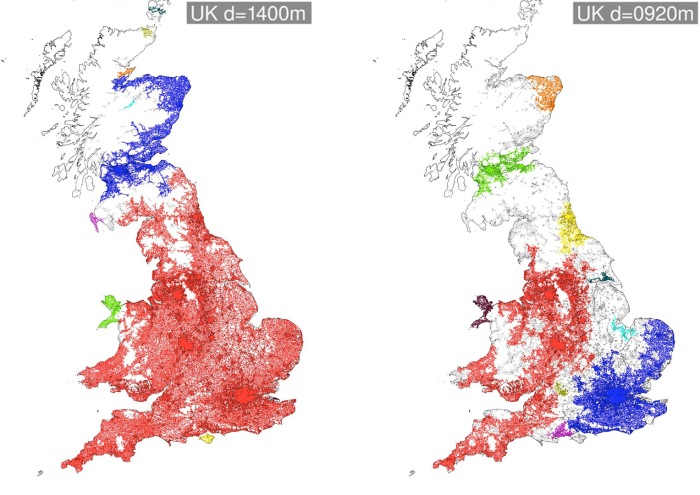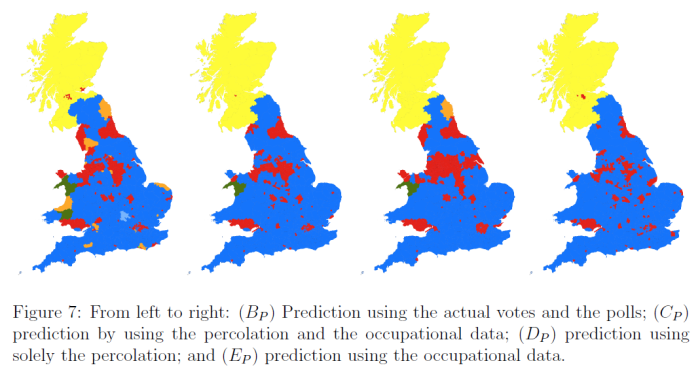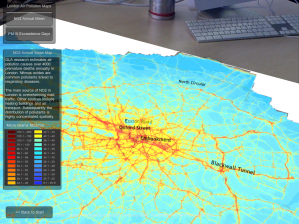Each year MSc students at CASA demonstrate their spatial data visualisation skills with a group project. The theme this year was ‘Global to Local’, and the class of 2022 has produced some particularly excellent work, experimenting with a range of visualisation tools and techniques.
Sustainability and Climate Change
Several groups interpreted the main theme in terms of global sustainability and climate change. These projects included investigating flood events, both locally and in terms of impacts on the UK; global heating in the Arctic and sea-level rise; and the effects of global temperature changes on the wine industry, with both positive and negative changes. Some interesting visualisation trends here included the use of high quality spatially detailed global datasets; using non-Mercator web projections (a recently added feature to Mapbox); experiments with animated data; and also use of 3D globes.



Global Cultural Interactions
Taking a very different tack, several groups looked at Global to Local interactions in terms of cultural and culinary exchanges. One group used story-mapping techniques to show Chinese cultural diffusion, including the history of the Silk Road and Zheng He’s early voyages of discovery. Another approach was to look at global interactions through food, including creating a virtual kitchen as an interface to global food journeys, and mapping major food importers to the UK.



Energy and the Cost of Living
Returning to the sustainability theme, several groups zoomed in on energy and affordability challenges that the world is currently experiencing. One group used some advanced D3 charting to tell the story of the UK’s varying energy imports and wider global affordability challenges (see image below). A different take was to chart the energy generation mix in major economies around the world. Another topical affordability challenge relates to housing in major cities, and one group mapped relative affordability of housing in major cities across the globe.



Covid-19 Visualisations
The aftermath of the pandemic is still with us, and tracking Covid-19 was another interpretation of the Global to Local theme. One group experimented with animation to track the spread of the virus. Another used graphs and interactive mapping to investigate how effective lockdown policies were in a series of case studies.


Global Digital Divides
Finally, another interesting take was to think about online communities as interactions between global and local, including the changing geography of internet access and the division of the world into different online platforms by language and political and economic divides.

Here is the full list of project groups and websites-
- Delugeo Global Flooding-
Sangbin Lee, Murray Chapman, Xinyi Huang, Nina Fabsikova, Henry Song
https://nfabsikova.github.io/delugeo/ - Clean Energy Now-
Jiani Gong, Jeonghwa Kang, Linhan Cao, Seren Shi
https://linhanccc.github.io/CASA0003-GROUP2/website.html - 30 Degrees Rising-
Nayomi Kasthuri Arachchi, Haisu Chen, Daphne Badounas, Tianyi Li
https://eloquent-crepe-6cc40a.netlify.app/ - Chinese Cultural Diffusion-
Rongrong Xue, Yuning Jiang, Zhonghao Li, Ce Hou
https://casa-chinese-cultural-diffusion.github.io/digital-viz-Chinese-Cultural-Diffusion/html/main.html - A Change in Climate, a Change in Taste-
Ruby Johnson, Haofu Wang, Andras Gelanyi, Shuyi Zheng, Kameliya Staneva
https://agelanyi.github.io/climate-and-uk-wine/website-frontend/index.html#firstSection - Why are energy prices rising?-
Sunny Zhao, Elika Sinha, Val Ismaili, Ankur Shanker, Bolin You - The World in your Kitchen-
Zicheng Fan, Jingran Ma, Hangjin Cai, Haotian Meng, Liyuan Dong
https://world2kitchen.github.io/The_World_in_your_Kitchen/P0_Panoramic_and_Fullpage/fullpage.html - San Francisco: Global to Local-
Mengjiao Luo, Jieqi Tan, Wei Wang, Siyi Cai, Yanpu Huang
https://casa0003group8.github.io/HousepriceSF/index/housepriceSF - How does Covid-19 influence the world?-
Ian Liu, Peizhao Wang, Shirao Zhang, Miaomiao Pan, Lin Sheng
https://peizhaowang.wixsite.com/casag9covidimpact - From the Global to your Table-
Shengwei Deng, Zhenlei Gu, Jing Liu, Yujie Hu, Xinwei Kang
https://zhenleigu.github.io/CASA0003_Group10/ - Did Lockdown really Stop the Virus?-
Jikai Song, Lucia Zhang, Jianqiang Li
https://jikaisong1997.github.io/ - Worldwide Digital Divides-
Ruijie Chang, Maidi Xu, Zhiheng Jiang


